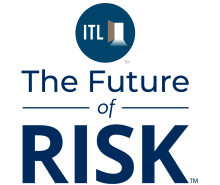Over the last few years, artificial intelligence (AI) and machine learning have become integral to the insurtech industry. According to PwC, the global AI insurance market size was $4.59 billion in 2022 and is projected to reach approximately $80 billion by 2032, with North America leading the way. Most companies, whether they are traditional insurers or insurtechs, have a plan to implement artificial intelligence into their business operations and propel the industry forward.
As an insurtech, Cover Genius has embraced AI and machine learning since our inception to provide dynamic recommendations through our API. However, as LLMs (large language models) and generative AI continue to evolve, they promise to revolutionize even more business processes, such as integration, content creation, claims processing and distribution.
Streamlining integration
One area where AI can significantly support insurtechs is by streamlining integrations. Insurance policies are inherently complex, with different structures depending on the region, geography and underwriter. This complexity often makes launching an integration a time-consuming process, requiring extensive testing to ensure the right policy reaches the right customer in the right market.
However, AI is transforming this process by automating test cases and improving launch times. This technology enables faster, more efficient integrations, allowing brands to easily update or launch new offerings across markets. Previously, these changes required significant investment, making companies hesitate to change their offerings, even if it meant making them better.
By automating and streamlining the integrations, AI empowers insurance providers to improve and evolve their offerings with minimal investment, saving valuable time and resources while ensuring their policies meet regulatory requirements.
Content creation and claims processing
Another key area where AI is changing the insurance industry is content creation and claims processing. AI can assist in automating email responses, Web UI (user interface) translations and copy generation, leading to more personalized customer experiences, improved engagement with insurance offers and faster operations.
Additionally, AI enhances the claims process by facilitating document translation and data extraction during the claims process, making it easier for insurers to verify claims against policy coverage. By automating routine tasks such as data extraction, document verification, and initial claim assessment, companies can reduce manual intervention and human error. In addition, AI-driven chatbots and virtual assistants can handle repetitive, administrative queries from clients, freeing staff to concentrate on higher-value-added tasks, such as coverage-related queries.
Complex claims cases will always require human oversight, but this approach helps speed response and resolution times so customers are not out of pocket on expenses for too long. At Cover Genius, we combine AI capabilities with human expertise to create claims experiences that are faster, more personalized and supportive of customers in their time of need.
Distribution and personalization
In distribution, AI enhances customer support by answering questions throughout the policy lifecycle – not just at the time of a claim. For example, advanced demand modeling and automated segmentation can contribute to more tailored offerings. If a customer books a winter flight to Switzerland, they can be identified as a candidate for ski coverage in addition to standard travel protection. As segmentation becomes more sophisticated, it unlocks new ways for customers to interact with platforms, making it easier to access relevant information and coverage quickly.
Balancing risk and compliance
AI is still a new technology, so while it is a powerful tool that can improve aspects of insurance, companies must proceed with caution, especially in areas where they are providing consumers with information about insurance products. For example, AI chatbots have often provided false answers or bad advice that do not align with actual business policies. From a risk perspective, insurtech companies must ensure they are not providing consumers with coverage advice while AI technology is still in its infancy.
Additionally, companies should remain aware of data considerations, such as customer consent and data ownership, when implementing AI measures. By carefully weighing the benefits and risks associated with AI adoption, insurtech firms can harness the full power of this groundbreaking technology while minimizing potential pitfalls.
Conclusion
AI has already transformed many aspects of the insurtech landscape, and its continued evolution promises even greater advancements. By leveraging AI for integration, content creation, claims processing and distribution, insurtech companies can maximize efficiency and deliver better services to their customers. However, balancing innovation with risk management is essential to ensure responsible and sustainable growth of AI in the insurtech sector. With careful planning and strategic implementation, AI has the potential to reshape insurance and create a more efficient, customer-centric industry.






